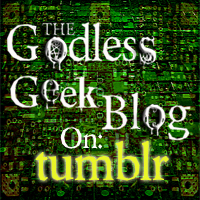Monday, August 9, 2010
Wave Particle Duality, and Double and Triple slit Experiments.

The past few weeks my schedule has been stupid busy and I simply haven't had the time to sit still long enough to write anything of substance. So I apologize for the lack of activity around here as of late and I promise to do my best to avoid it in the future, although with all the things I have going on at any given moment, lulls are bound to occur from time to time. For now, let me make up for my inactivity and start catching up on some of the cooler things I missed over the past few weeks starting with a light little entry about Quantum Mechanics.
Whereas Einstein's theory of general relativity was designed to describe the effects of gravity on the large scale world, Quantum mechanics on the other hand, seeks to describe the interactions of particles at a sub-atomic level. One of the best known concepts in quantum mechanics is wave particle duality which is the idea that particles, like photons and even electrons, behave as both a particle and a wave simultaneously. while the idea itself dates back as far as the 1600's, the best known illustration of this effect, the double slit experiment or Young's experiment, was first conducted in the early 1800's by Thomas Young.
In his original experiment , Young used a single beam of sunlight passed through a pinhole in a window shutter and then reflected off a mirror to produce as coherent a source of light as could be managed for the time. By then placing a small paper card into the beam, young was able to split a single coherent source of light into two. If light really did act as a wave then those two beams of light would interfere with one another and project their interference pattern on a screen Young had set up in front of the beams which he could then measure and use to determine the lights wavelength. This is of course exactly the result Thomas attained from his experiment. As significant as this first observation was and though the two have become interchangeable in discussions of Quantum mechanics, Young's version of this experiment is not the one that most have in mind when referring to the double slit or even Young's experiment.
In the most well known version the double slit experiment, a laser beam or even a single particle, is fired through parallel slits in a thin plate. When the particles pass through a single slit a single-slit diffraction pattern is produced. When particles are fired through both slits, an interference pattern emerges as the edges of particle waves crash into one another like rings on the surface of a pond. Most astonishingly of all, the same patterns are produced when particles are fired one at a time into the slits. Meaning, even a single particle behaves as both a wave and a particle and actually manages to interfere with itself as it passes through the slits in the plate.
Researchers from the Institute for Quantum Computing at the University of Waterloo in Canada recently conducted a triple slit experiment. The result of this experiment not only continues to support the theory of wave particle duality, but also seems to confirm predictions made by German physicist Max Borne in the 1920's. Borne's proposal that quantum pairs, not triplets or more can interfere with one another, has been widely accepted by physicists for years even though the reason why quantum interference stops at two is unclear and had not been explicitly tested until Waterloo's most recent experiment.
-CAINE-
Links and Additional Content
Check out this article on Wired science for more info on the triple slit experiment.And just in case your still a little confused by wave particle duality(don't feel bad quantum physicists are too)Perhaps DR Quantum can help. Remember, You're never too old to learn something cool from a cartoon!
Subscribe to:
Post Comments (Atom)



Thanks. Can you make a similar anime for triple-slit experiment? Thanks a lot in advance!
ReplyDelete